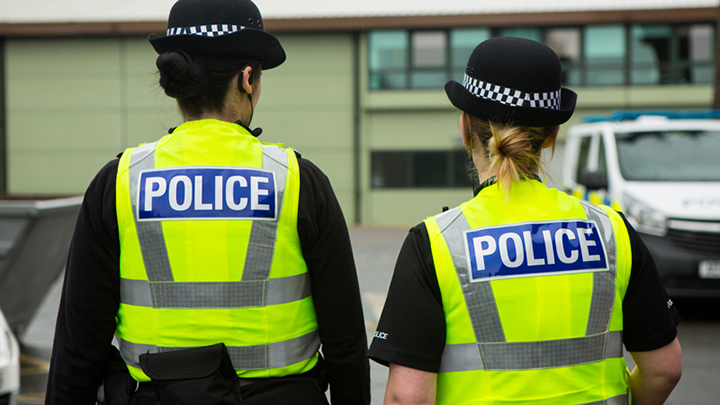Post Incident Procedures (PIPs) are not only for specialists – they can affect any officer any time.
This was the take-away message from the Federation’s annual PIPs seminar, which was held at Hinckley, Leicestershire on 15-16 October, and attended by 225 delegates and speakers.
PFEW Vice-Chair, Ché Donald summed up the importance of PIPs when he said: “Whether you are an officer involved in a serious incident or the family of someone who has lost their life, PIPs can deliver the best possible outcome following a traumatic or life-changing event.”
Now in its third year, this was the most interactive PIPs seminar to date. Audience questions played a large part and volunteers were even invited to try a VIPER Firearms Training simulator as part of a session entitled Shoot Don’t Shoot.
Scenarios including a hostage situation, a drugs den and an armed man threatening to shoot himself, were shown on screen as volunteers armed with laser enabled guns had a split second to decide whether to shoot. The exercise also prompted a discussion around perception and distortion as tunnel vision comes into place in the moment an officer is faced with a life or death situation.
Two serving firearms officers also tackled the simulations, allowing delegates to see the differences in their approach.
It was agreed that Body Worn Video (BWV) is vital tool in the aftermath of a death or serious injury involving police contact but the officers’ ‘honestly held belief’ remains key to understanding the outcome and whether blame should or should not be apportioned.
Lawyer Mark Wardley told the seminar that police dog bites should be considered under PIPs, adding that it “fits the definition of a serious injury and we need to be ready”.
While national firearms lead DCC Simon Chesterman urged officers to follow Authorised Professional Practice (APP), saying it was a better bet and afforded more protection than the new draft statutory guidelines issued by the Independent Office for Police Conduct last week.
He said: “The new statutory guidance does offer some wriggle room and is much better now than it was in its original form when it first came out in 2014. But the APP has been tested in court and if you stick to it, you can’t go wrong.”
Mr Chesterman also tackled issues around the separation of officers – this makes people who have just been through a life-changing incident feel like suspects rather than witnesses he said – and discussed the issue of anonymity in today’s world of body worn video.
The seminar also heard from the Federation’s National Custody Forum Chair Chris Bentley who said PIPs was not always easy to accommodate in the custody arena. “At 3am where are you going to find three custody sergeants and seven jailers needed for the 39 other detainees being held that night?” he said. Chris called for better PIPs training for non-police custody staff such as detention officers and custody nurses.
Two Staffordshire response officers, PCs Tony Collier and Rob Goodwin, talked delegates through a real life pursuit they had been involved in, which ended in a three-car collision and life-changing injuries. With the support of the local Federation, sympathetic bosses and Occupational Health, they were guided through the investigation procedures after a malfunctioning ‘black box’ system [Spirit] showed their car speeding at 100 mph.
He explained in simple terms, how factors the stress of being restrained can create a toxic combination of internal factors (such as a build-up of acidity and carbon dioxide) and have fatal consequences. The remedy is to sedate the detainee as quickly as possible and Taser has a part to play in restraining a would-be detainee at risk of ABD, he said. The point was made that police and the ambulance service needed to work more closely to tackle the problem.
A live demonstration of an arrest was staged on day two as part of a session called the Physiology of Restraint. In it the man being arrested wore a potentially revolutionary heart rate monitors and oximeter which flash his vital signs on to a large screen.
Cambridge University and Police Dependants’ Trust researcher, Dr Jess Miller, unveiled some new work around trauma processing for police officers, and Essex Police Federation Chair Steve Taylor presented a training video which explains the PIPs process. The seminar also heard from lawyer Tim Coolican from Slater & Gordon spoke about the process of applying for anonymity, and some of the pitfalls.
Federation Chair, John Apter, underlined the importance of working closely with other organisations such as the police watchdog, the Independent Office for Police Conduct, Professional Standards staff and local unions, saying: “I accept that we are not always going to agree, but it’s how you disagree that matters. We have to keep the conversations going and work together. It’s not about being too cosy with them, it’s about being challenging.”
John also congratulated his Vice Chair on the success of the seminar, as Ché Donald prepares to hand over the reigns of future events. In closing it was noted that the benefits of good post incident procedures (PIPs) can make all the difference between ‘career death’ or keeping the job officers love.













